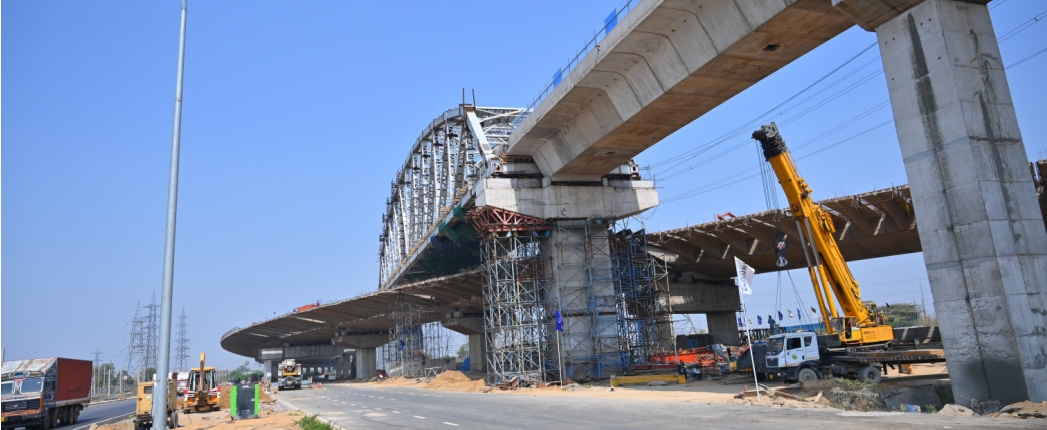
India’s lubricant market will be a bright spot in the global industry over the next decade, according to a consultant presentation at a recent conference, expanding by a quarter in volume and growing even faster in terms of value.
Those trends will be driven by robust expansion and evolution of the nation’s economy, Kline & Co. Vice President Milind Phadke said on July 26 at Shining Bright: Unlocking Growth Opportunities in the Indian Lubricants Market, an event organized by the firm and supported by Gulf Oil Lubricants India Ltd. Infrastructure investments, growth across a wide range of industries, a burgeoning workforce and growth in personal income will spur lube consumption that outpaces the demand-dampening impacts of automobile electrification, he said. The quality of lubricants in the market will also rise.
“The Indian economy is poised to grow strongly, which will lead lubricant demand to surge despite electrification,” said Phadke, who provided a copy of his presentation to Lube Report.
India is the world’s third-largest lubricant market, after the United States and China at nearly 3 million metric tons per year, according to Kline’s estimates. The firm, which is headquartered in Parsippany, New Jersey, United States, predicts demand in India will grow at a compound annual rate of 3% from 2022 through 2027, then slow a bit to reach around 3.7 million t/y by 2032.
“There is strong potential for lubricant demand growth across the auto and industrial sectors,” Phadke said. “The consumer automotive segment’s volumes will grow the fastest over the next five years before slowing down. Over the mid- to long-term, industrial and commercial automotive segments will drive both volume and value growth.”
The firm estimates that the commercial automotive segment currently consumes around 850,000 t/y of lubricants, including hydraulic/transmission oils, gear oils and greases. It forecasts that the volume will grow at a compound annual rate of 2.7% through 2027, then tail off to annual growth of 1.8% for the rest of the decade.
On-highway applications account for almost 60% of the overall demand from commercial automotive segment; demand from on-highway will grow slightly faster than off-highway sub-segment. On-highway sub-segment’s growth will be supported by expansion in the volume of goods being transported, improving highways and a shift toward heavier trucks. Off-highway consumption of lubricants will also grow thanks mostly to growing mechanization of agriculture and infrastructure growth.
Volumes of heavy-duty motor oils would grow strong even with widening drain intervals. Kline expects that the share of 20Ws and monogrades will continue to fade in both the on- and off-highway sub-segments. While the share of 15Ws will continue to grow, there will be stronger growth for 10Ws, especially in on-highway sub-segment. Most heavy-duty oils will continue to be conventional, however, shift towards semi-synthetics will be faster.
Two-wheelers use nearly 300,000 t/y of motorcycle oils, the firm estimates. It expects that number to rise slightly through 2027 but then to fall back to around the current level by 2032 as sales shift to electric models, which do not use engine oil.
Passenger car motor oil demand amounted to roughly 150,000 tons in 2022 but is expected to approach 250,000 tons by 2032 as car sales surge and cars will larger capacity (implying bigger oil sumps) penetrate the car parc, Phadke said. Car sales will increase because of a widening middle class and limited public transportation.
India’s uptake of electric cars is expected to be slow, and that means passenger car motor oil demand will continue increasing for years.
“PCMO demand is unlikely to peak until the late 2030s,” Phadke said. “EV impact on lube demand will be limited through 2032.
Motorcycle oils and passenger car motor oils will both trend toward products that are lower viscosity and more synthetic.
Kline forecasts strong growth in sales volumes for most types of industrial lubes. Demand for those used by railroads will probably fall as the industry electrifies. Demand growth for metalworking fluids will slow as EV sales rise since EVs are manufactured with fewer metal parts. Slow growth in thermal energy generation will slow demand growth for lubes used in power generation. However, strong manufacturing sector, growing power transformation capacity, rapid infrastructure development, immense potential from chemicals, pharmaceutical, rubber industries will result in strong growth in the industrial lubricants demand, which accounts for 55% of India’s lubricant demand.
While the long-term volume growth fundamentals are robust for Indian lubricant market, growth of value will be faster and will vary across different sectors. To illustrate Kline’s forecasts about the pace at which lubricant value will rise, Phadke broke down projections to the periods from 2022 to 2027 and from 2027 to 2032. The firm predicts volume demand by the consumer segment to grow at compound annual rate of 3.5% through the first half of the decade and 0.5% through the second half, but it said the value of that demand will grow at a pace of 6% through 2027 and then 4.6%.
The volume of demand from the commercial and industrial segments will grow 2.7% and then 2.2%, Phadke said, while the value will increase at a pace of 6.9% through 2027 and 6% thereafter.